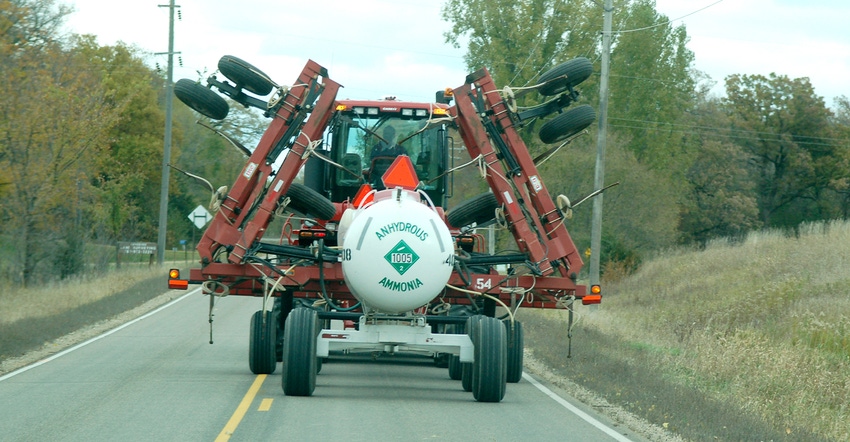September 30, 2019

Changing seasonal weather continues to test the patience of farmers and applicators who want to apply fertilizer this fall.
The Minnesota Department of Agriculture is reminding farmers to check the soil temperatures and delay application of anhydrous ammonia and urea fertilizer, as well as manure, in areas of the state suitable for fall application until the average soil temperatures reach 50 degrees F or below.
To assist tracking soil temperature, MDA provides real-time 6-inch soil temperatures at 25 locations across the state, from Roseau to Luverne to Gordonsville. MDA also provides soil temperature data for University of Minnesota research stations and North Dakota Ag Weather Network weather stations.
View the interactive map to find the current 6-inch soil temperature and the past week’s history.
Fall fertilizer application is not recommended in all areas of the state due to groundwater contamination concerns. Regions with coarse-textured soils, areas over shallow bedrock, and regions with karst geology are the most vulnerable to nitrate loss and groundwater contamination.
Beginning in the fall of 2020, fall fertilizer application in these vulnerable regions will not be allowed under the MDA’s Groundwater Protection Rule. View a map of the vulnerable regions of the state online.
In other areas of the state where fall nitrogen fertilizer application is allowed, MDA encourages delaying application until soil temperatures cool to below 50 degrees to help prevent loss, protect water quality and ensure more nitrogen will be available for next season’s crop.
At cooler soil temperatures, the incorporated fertilizer is less likely to be converted to water soluble nitrate. This occurs because the microbes in the soil that convert ammonium to nitrate are less active in cooler temperatures. Less activity and less conversion mean more ammonium will remain in the soil. Once converted to nitrate, it can be moved by water percolating through the soil, leaching out of the root zone. This commonly occurs in early spring when soils thaw.
Although the soil temperature network was established to support application of commercial fertilizer, it is equally useful for those applying manure in the fall. University of Minnesota Extension recommends the same temperature delay (6-inch soil temperature below 50 degrees) to prevent leaching losses. Research from U-M Waseca showed liquid dairy and hog manures injected in November produced yields 10 bushels per acre higher than manures injected in September and October.
Source: MDA, which is solely responsible for the information provided and is wholly owned by the source. Informa Business Media and all its subsidiaries are not responsible for any of the content contained in this information asset.
You May Also Like




